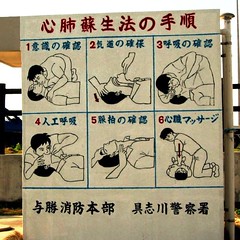| CPR: cardiopulmonary resuscitation (Photo credit: eesti) |
One of the most important accidents that ever happened, the potential of Penicillin was realized when Sir Alexander Fleming at the St. Mary's Hospital in London noticed bacterium being dissolved by a bluish green mold. This discovery gave rise to many more antibiotics used today, and undoubtedly have saved millions of lives ever since.
CPR was actually invented in the 1950s by Dr. Peter Safar and has since been the most effective method to revive and/or save an unconscious person's life. Standing for Cardiopulmonary Resuscitation, it is widely taught in today's world to lifeguards to doctors.
The artificial heart was invented by Willem J. Kolff, a Dutch born medical researcher. Robert Jarvik helped him complete the design, which can beat over 100,000 times a day and sustain a person until they can find a suitable heart transplant. Artificial hearts were not the only rise in artificial equipment used in the medical world. Artificial knees, hips, spines, arms and legs have all made tremendous gains even within the past 50 years, with the help of the development of products like bone screws and phaco handpieces. These advances have also given way to a booming industry of orthopedic manufacturer companies.
Who knows what's in store for our future, but after looking at what's happened in the past, I'm quite optimistic!



